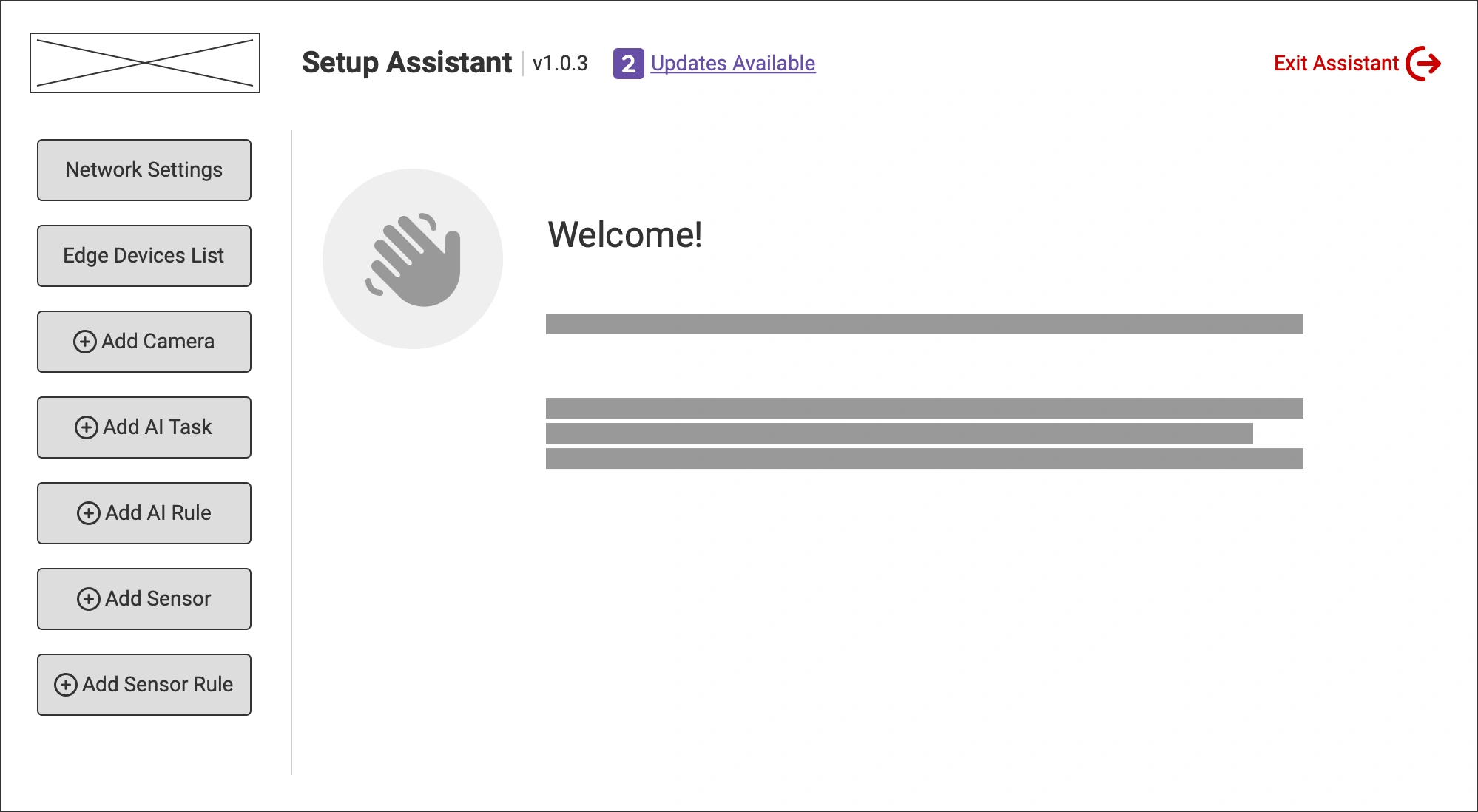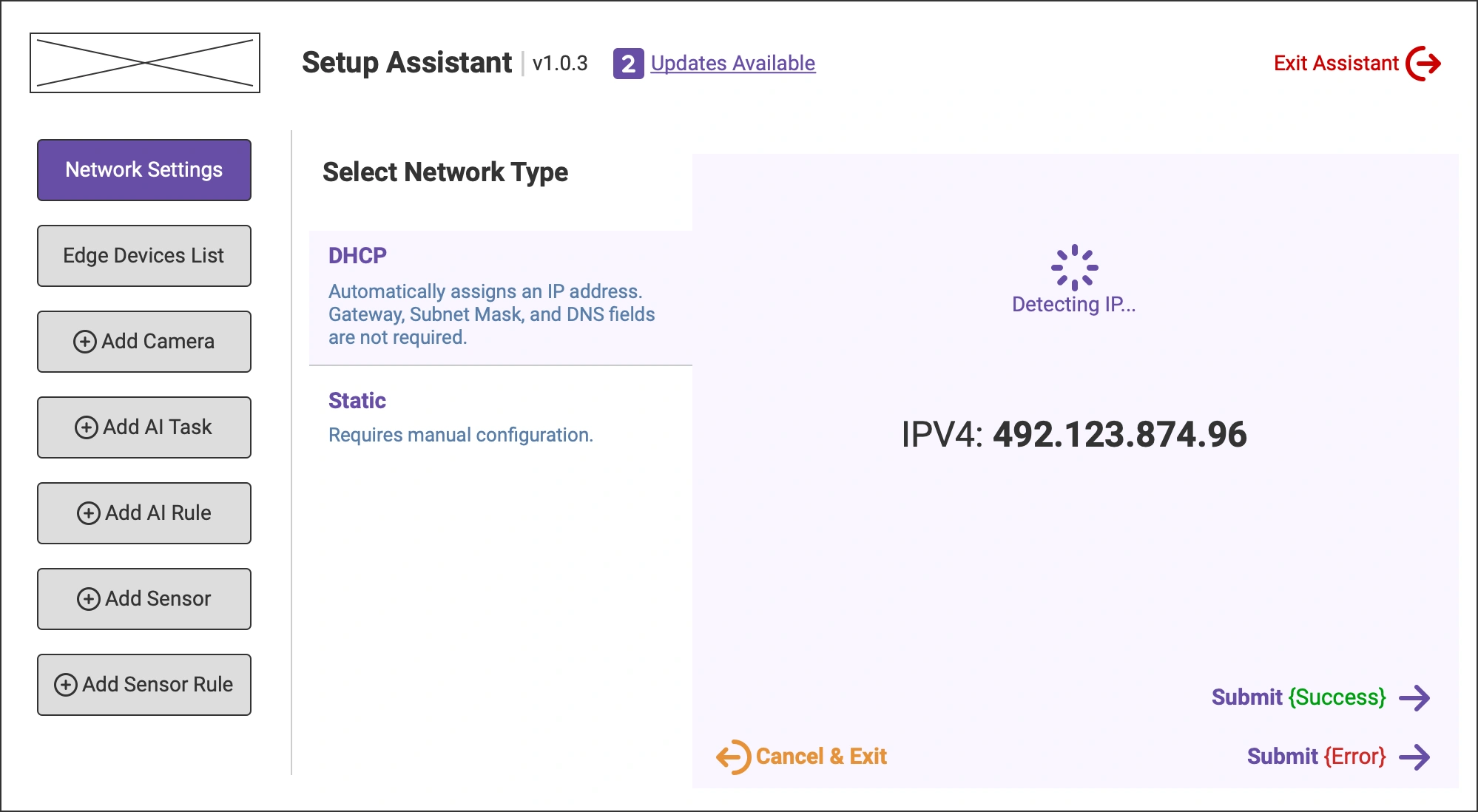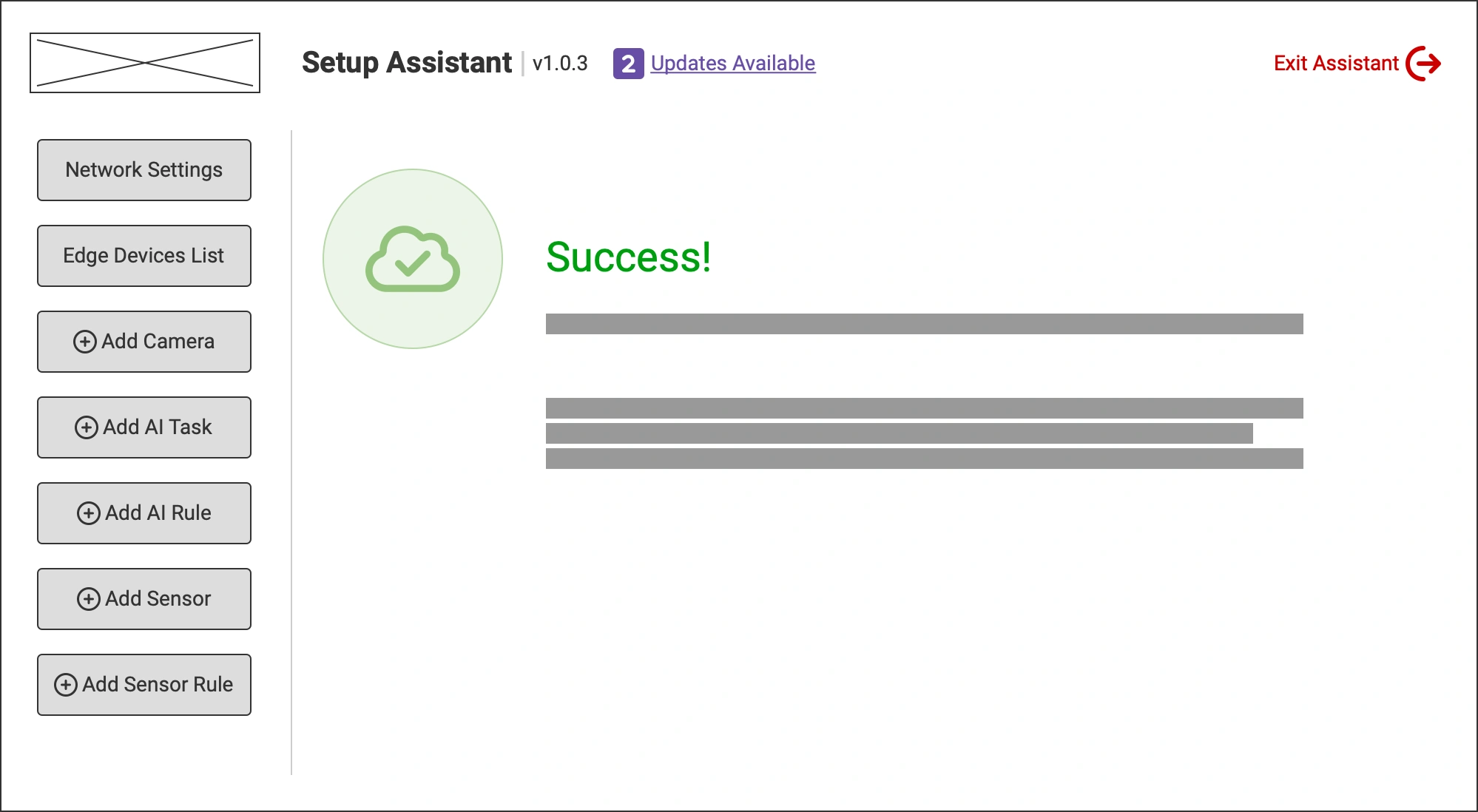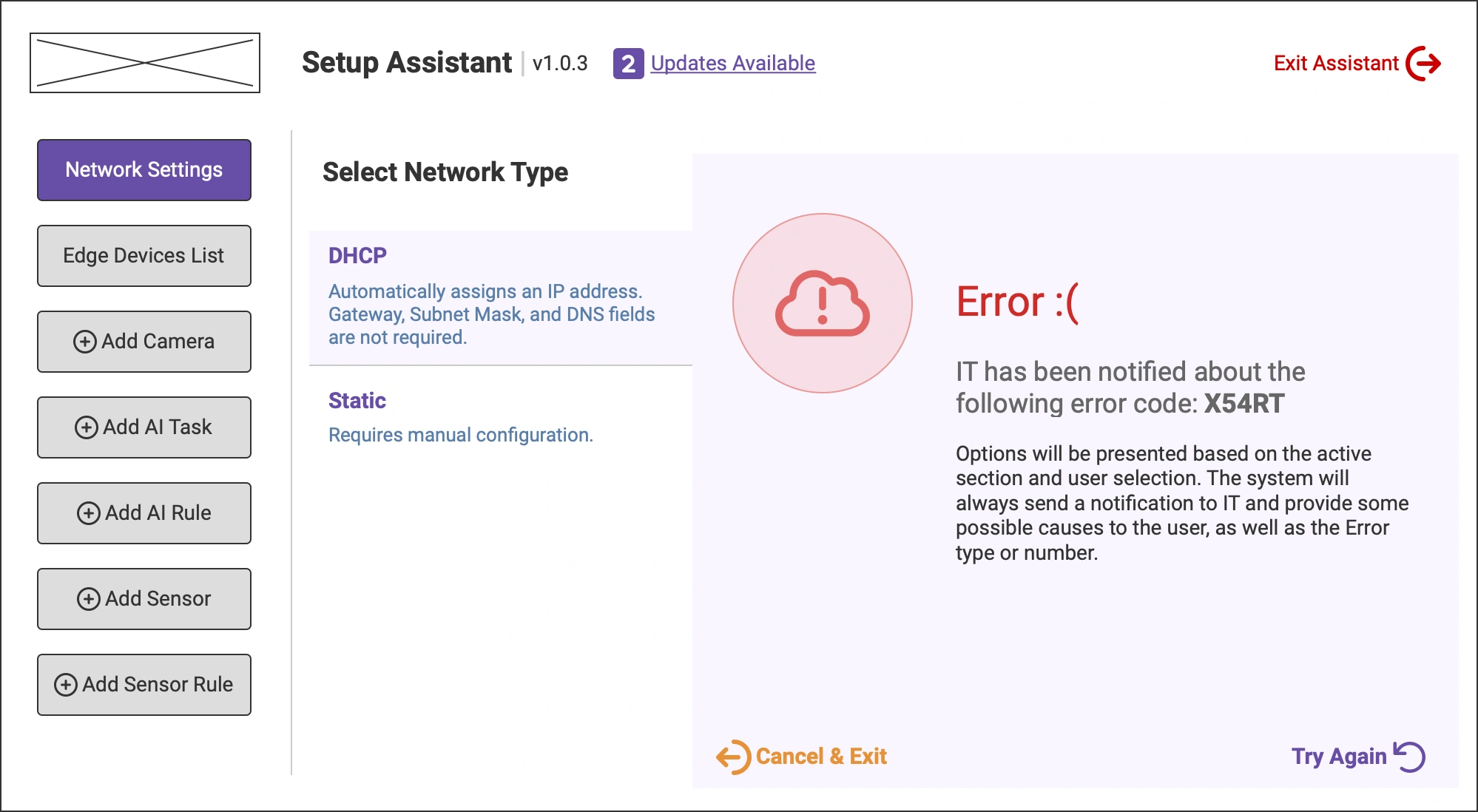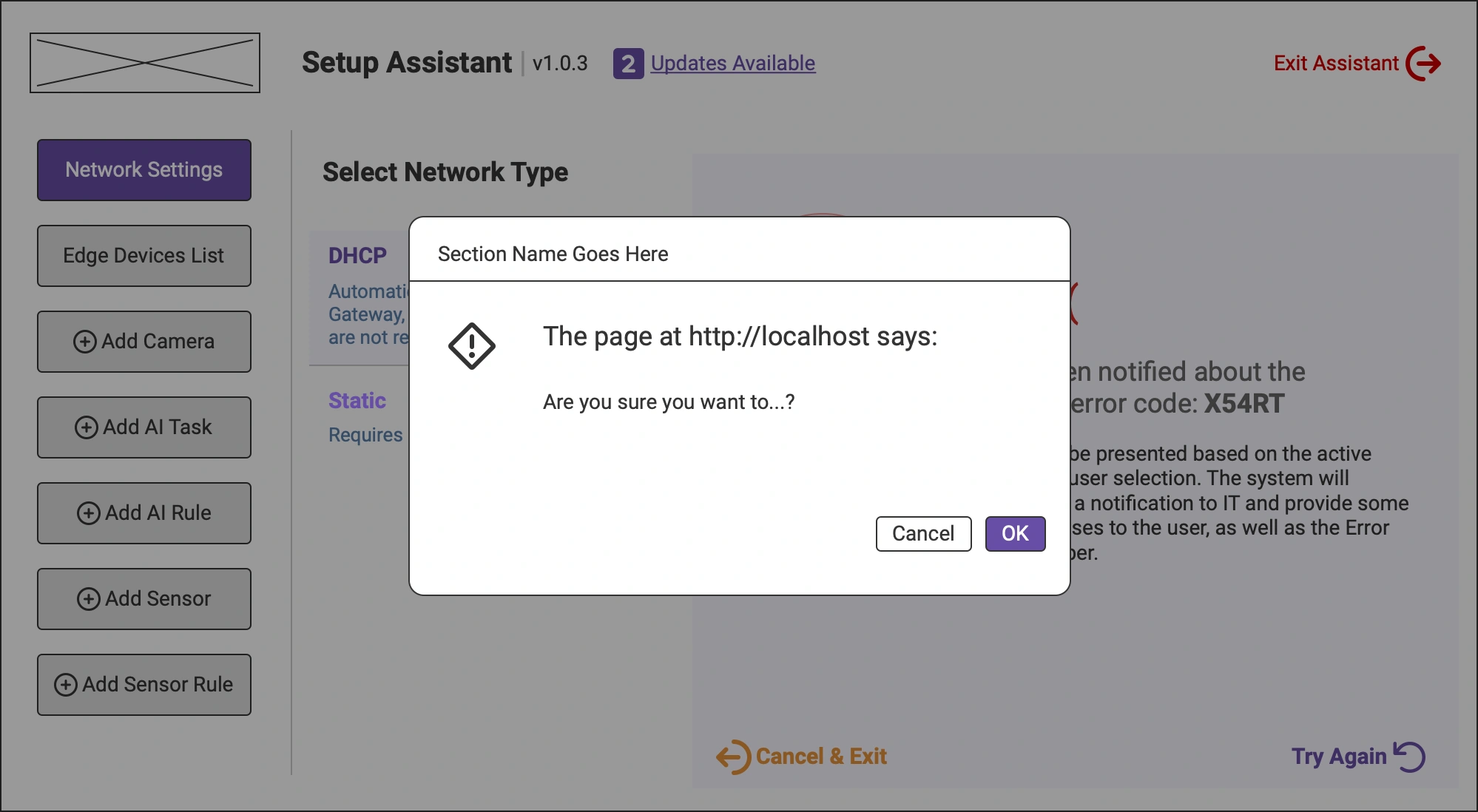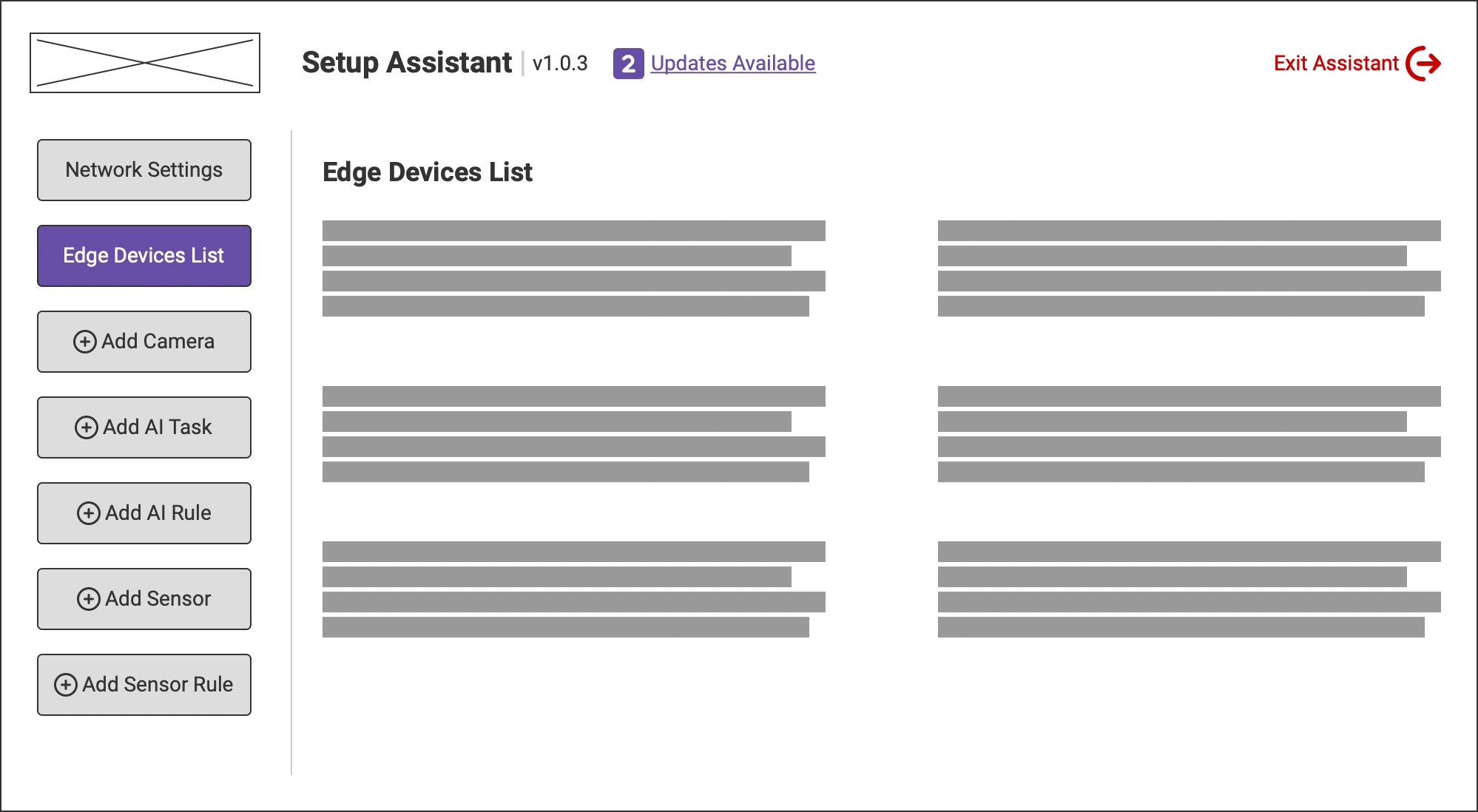EPIC iO — DeepEdge: Human-Centered UX for On-Device AI Surveillance
Designing an intuitive touchscreen experience for edge AI surveillance devices. Through heuristic analysis, wireframing, and user-centered iteration, the project delivered a minimal, efficient, and field-ready interface optimized for small embedded screens.
UI System Implementation
See how the design system translates into real user interfaces, emphasizing clarity, scalability, and usability.
Project Overview
DeepEdge is EPIC iO's on-device AI surveillance interface, designed for compact touchscreen panels built into edge systems. The goal was to redesign the legacy firmware UI into a compact, touch-optimized interface capable of operating fully offline while maintaining clarity and speed in critical monitoring environments.
This project represented EPIC iO's shift toward human-centered UX in embedded systems, where visual simplicity, intuitive flow, and technical resilience are vital for field operability.
The project focused on reimagining how operators interact with field-deployed monitoring units, optimizing every action—from device setup to live analytics—through a touchscreen-first design language tailored to the physical and environmental constraints of edge hardware.
Project Summary
Timeline & Team
2024
Lead UX/UI Designer — discovery, IA, and structural definition
Tools & Methodology
Wireframe, FigJam, Internal hardware emulator
UX research, heuristic evaluation, user journey mapping, wireframing, interaction design
Key Deliverables
- • Heuristic audit of existing firmware interface
- • Redesigned navigation logic for key tasks (monitoring, device setup, AI model configuration)
- • Low-fidelity wireframes and interactive flows for gesture-based control
- • Visual and motion principles for real-time feedback and error states
- • Usability validation prototype tested on engineering devices
Performance Metrics
Usability improvements were observed qualitatively during internal reviews, with early prototypes showing clearer navigation and faster task completion on embedded devices — pending quantitative validation in future production phases.
Problem Statement
The existing DeepEdge interface was repurposed from a desktop system and not designed for touch environments. Operators in the field faced usability barriers including:
- Dense layouts and small touch targets: Limited interaction accuracy in field conditions.
- Poor visibility under direct light: Color contrast inconsistencies affecting readability.
- Multi-step workflows: Basic device actions such as rebooting or configuring AI zones required excessive steps.
- Lack of feedback mechanisms: Users couldn't confirm whether commands executed correctly.
The challenge was to rebuild the interface for embedded touchscreen logic, optimizing every pixel and interaction for clarity and tactile efficiency.
Challenge
The project faced several critical challenges:
- Designing for constrained screen space while maintaining full functional parity.
- Adapting EPIC iO's broader design language to a hardware-bound context.
- Ensuring legibility and responsiveness in bright or outdoor conditions.
- Balancing performance and UX richness under limited hardware resources.
Approach
Following a comprehensive design methodology:
- Heuristic Evaluation: Applied a mobile-adapted heuristic framework to identify navigation, feedback, and consistency gaps in the current firmware UI.
- Task Flow & Information Architecture: Mapped the complete user workflow—setup, monitor, calibrate, and reset—reducing critical operations from five to two steps.
- Wireframing & Interaction Design: Used Balsamiq for low-fidelity wireframes, then refined touch logic and gesture mapping in FigJam. Prototyped quick actions, modal confirmations, and swipe-based panels.
- Visual Design Principles: Developed a dark-mode adaptive palette, large icons, and color-coded alerts for glove-friendly operation and minimal eye strain.
- Validation & Testing: Conducted tests with the engineering team using device emulators and physical hardware to confirm touch sensitivity and responsiveness.
Solution
The redesigned DeepEdge interface introduced a card-based layout centered on clarity, accessibility, and minimalism:
- Compact top-level navigation with quick access to key device functions.
- Context-sensitive shortcuts for real-time monitoring and AI control.
- Large tap zones with generous spacing for tactile precision.
- High-contrast visual hierarchy with dark adaptive styling.
- Feedback animations and progress indicators for command execution.
The result was a cohesive embedded UX model optimized for field efficiency and reliability.
Results
At the time of my participation, the DeepEdge project had not yet reached full production, as the team was still validating hardware performance and firmware integration.
However, the discovery and design phases produced key foundations that guided subsequent development efforts:
- Defined a complete information architecture and navigation model for small touchscreen environments.
- Delivered low- and high-fidelity prototypes validated internally by engineering teams.
- Established a design framework later referenced for other EPIC iO edge and IoT devices.
- Documented usability heuristics and interaction patterns to support future implementation and QA.
Key Takeaway
Designing for embedded devices demands a different mindset: one that prioritizes touch ergonomics, environmental constraints, and immediate feedback over decorative visuals.
DeepEdge demonstrated that when UX adapts to hardware realities, even small screens can deliver clarity, control, and confidence in mission-critical contexts.
